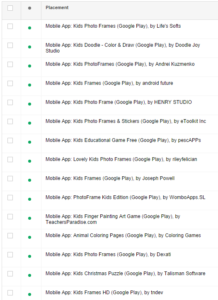What You Should be Excluding from Your PPC Campaigns to Utilize Your Ad Budget
When building PPC campaigns, marketers usually focus on what should be included in targeting attributions. However, campaign exclusions are equally as important. Negative audiences, keywords, and other exclusions help to reduce wasted spend ensure people see the right messaging at the right stage of the funnel, and prevent users from being retargeted with products too many times. With targeting capabilities only getting more advanced, why not take advantage and utilize your budget to its fullest potential?
Audiences You Should Exclude from PPC Campaigns:
Customer Support Seekers
Users browsing customer support pages are likely existing customers looking for assistance, not shopping for more products. Nuances may apply depending on the goal of your campaign. For example, if you’re trying to upsell, existing customers looking for support may be a good target audience. If you offer premium support, you can also promote that through remarketing. In general, these are not users you want included in your campaign. You can build retargeting audiences based on URLs associated with the support section of your site to exclude them from your campaigns.
Job Seekers
Those looking for open job positions are likely not going to be product or service purchasers. So you don’t want to waste your budget by serving them ads for your latest promotion. Usually you can identify these people by building a URL-based audience from your site’s career page. If you link to a third-party site for job applications, see if you can pixel that site, or track clicks to that site as a Google Analytics event to then build an audience for exclusion.
Past Converters
These are not necessarily current customers, but have engaged in a conversion action, such as submitting a contact form or clicked on an ad in the past. Whether or not you target this audience depends on your business goal. If you have a multi-step funnel to work people up to the point of sale, then you would probably want to continue targeting this audience. If that’s the case they should still be put into their own category, as you don’t want to show them the same ad as before. This can be accomplished by tracking who as made it to your ‘Thank You’ page, then excluding that group from your original campaign.
Current Customers
Whether or not you target this audience depends on your business goal as well. Sometimes you may want to sell current customers on additional features or new products. It’s often valuable to retarget past customers because they may be recurring revenue. Best practice would be to put past purchases into their own segment, see how they perform, and bid accordingly. Otherwise, you can create exclusions by uploading a customer match list of customer emails. If your product requires a login, you can build an audience based on people who have accessed pages that would indicate their status as a paying customer.
Additional Exclusions to Consider:
Your Own Company’s IP Address
You always hope that your own employees aren’t clicking on your ads, but it can happen. But if even the ad doesn’t get clicked, it can still be wasting budget. Every impression counts. If Google detects your ads being seen, but not engaged, your campaign can be penalized. An impression without a click lowers your CTR, which can lower your quality score. This can then increase CPC, leading to fewer clicks and fewer leads. It’s best to be proactive and just block your company’s IP address completely, avoiding wasted ad dollars.
Non-Business Hours
Some may believe running ads 24/7 is how you would capture the most business, but this is not the case. It’s rare for companies to get many conversions between midnight and 6am. If your intake team isn’t capable of handling leads after hours, don’t waste your budget on clicks you can’t convert. It’s best to only run ads during business hours to ensure all calls can be answered and emails can be immediately responded to.
Mobile Apps
This is an issue most common among display campaigns. While you want to show your ads for mobile searches, you probably don’t want them getting shown within apps. When ads show up on game apps they’re usually either immediately ignored or clicked accidentally. Both which aren’t favorable. Now imagine what happens when a child is playing on a smartphone or tablet somewhere. Below is a screenshot of just a few placements from ONE account for the few short months a Display Campaign was active:

At a top level look, it seems that your campaign is getting great clicks and impressions. When in reality it’s completely irrelevant traffic and wasted ad dollars. If you’re only getting a few irrelevant placements you can just exclude specific apps, otherwise you can exclude all mobile apps from your campaigns. This might be the best decision, as they can be costly clicks unlikely to convert.
Finals Thoughts
Developing the right audience targets takes analyzation and constant A/B testing. And if your business is seasonal your audience targets may often change. It’s important to remember what you include and exclude from your campaign all depends on your campaign and business goal.
More From Onimod Global
At Onimod Global we’re experts in all areas of digital marketing from SEM and Web Dev to Social Media and Content Marketing. Take a look at how we’ve helped other companies, and learn more about what we can do for you!










